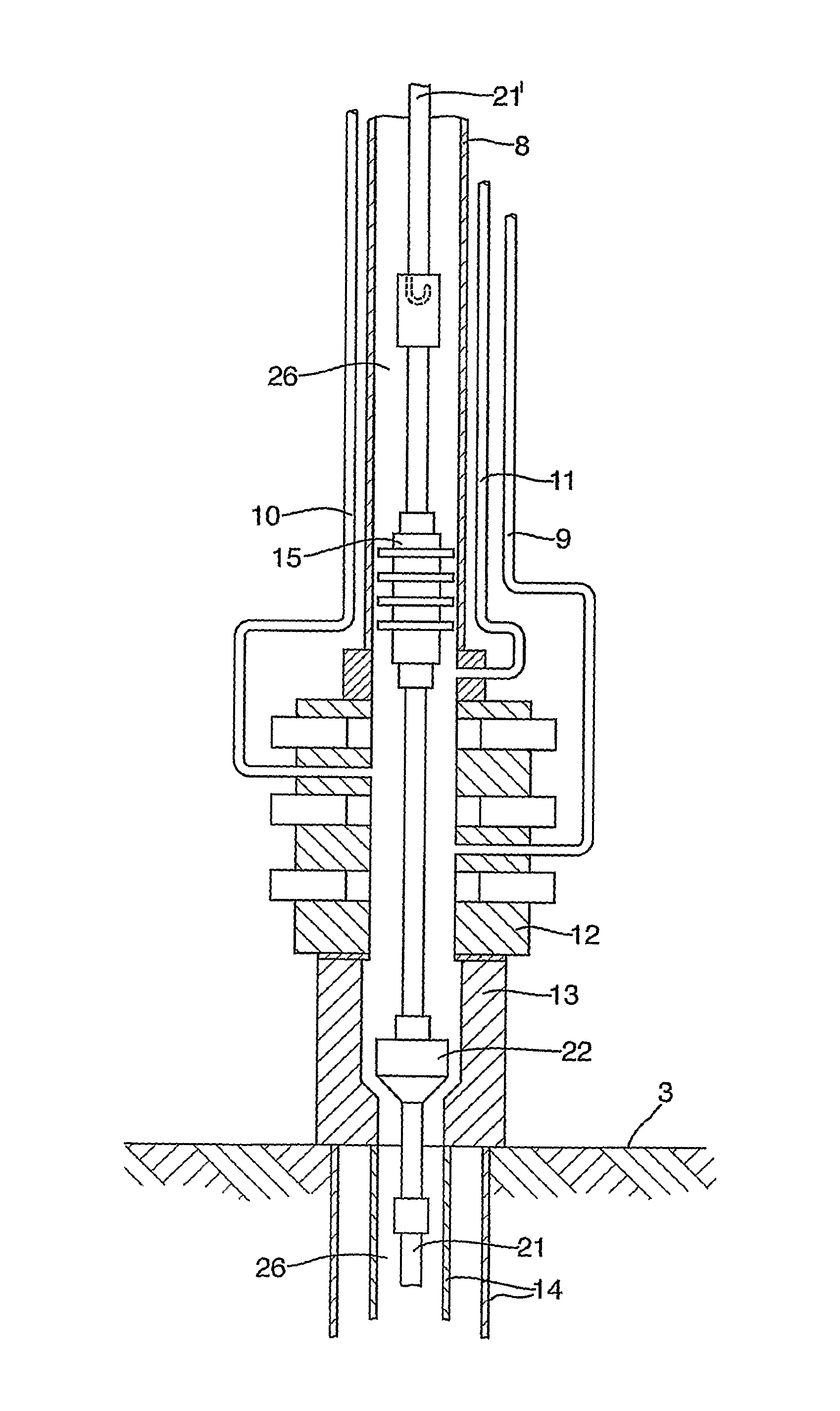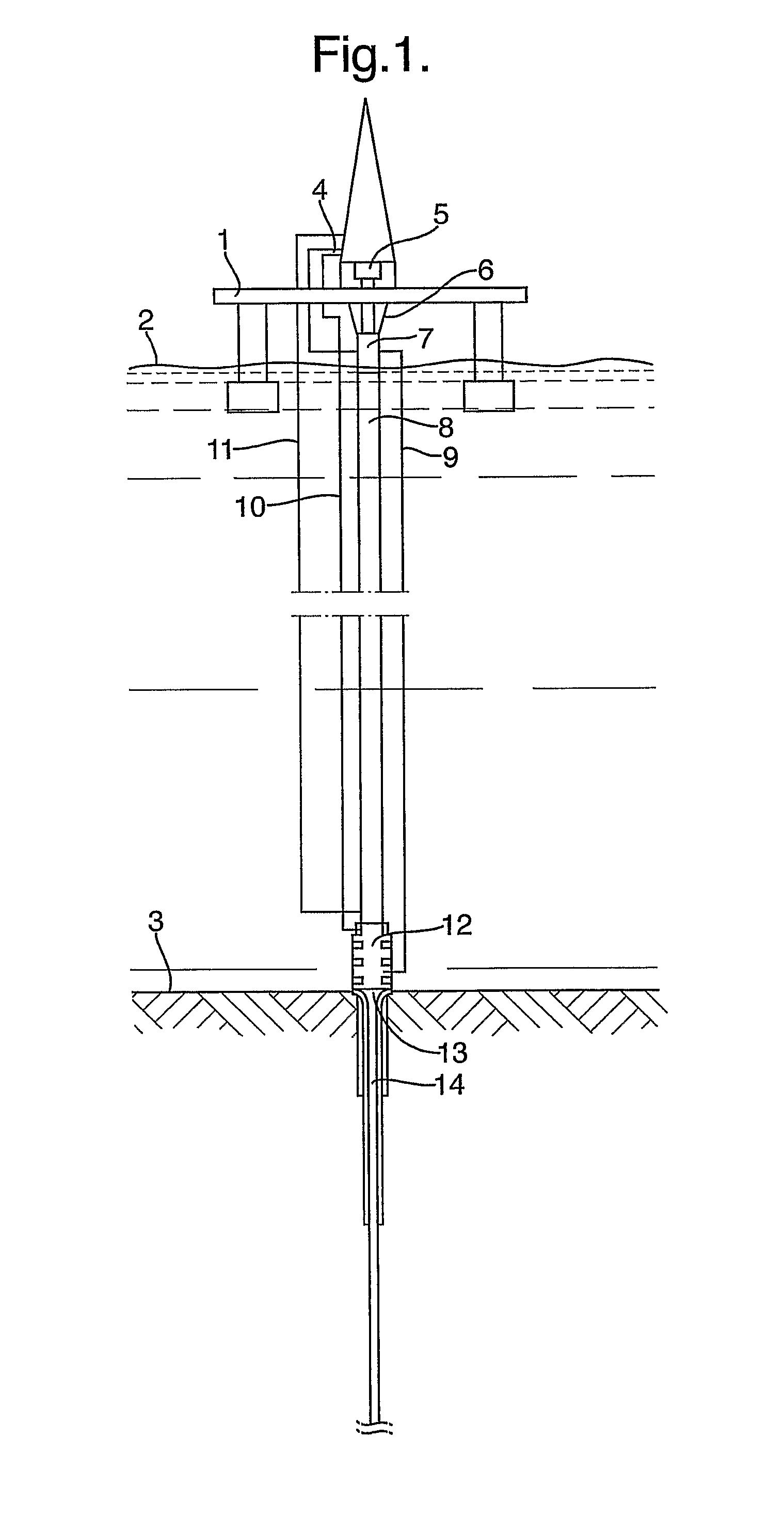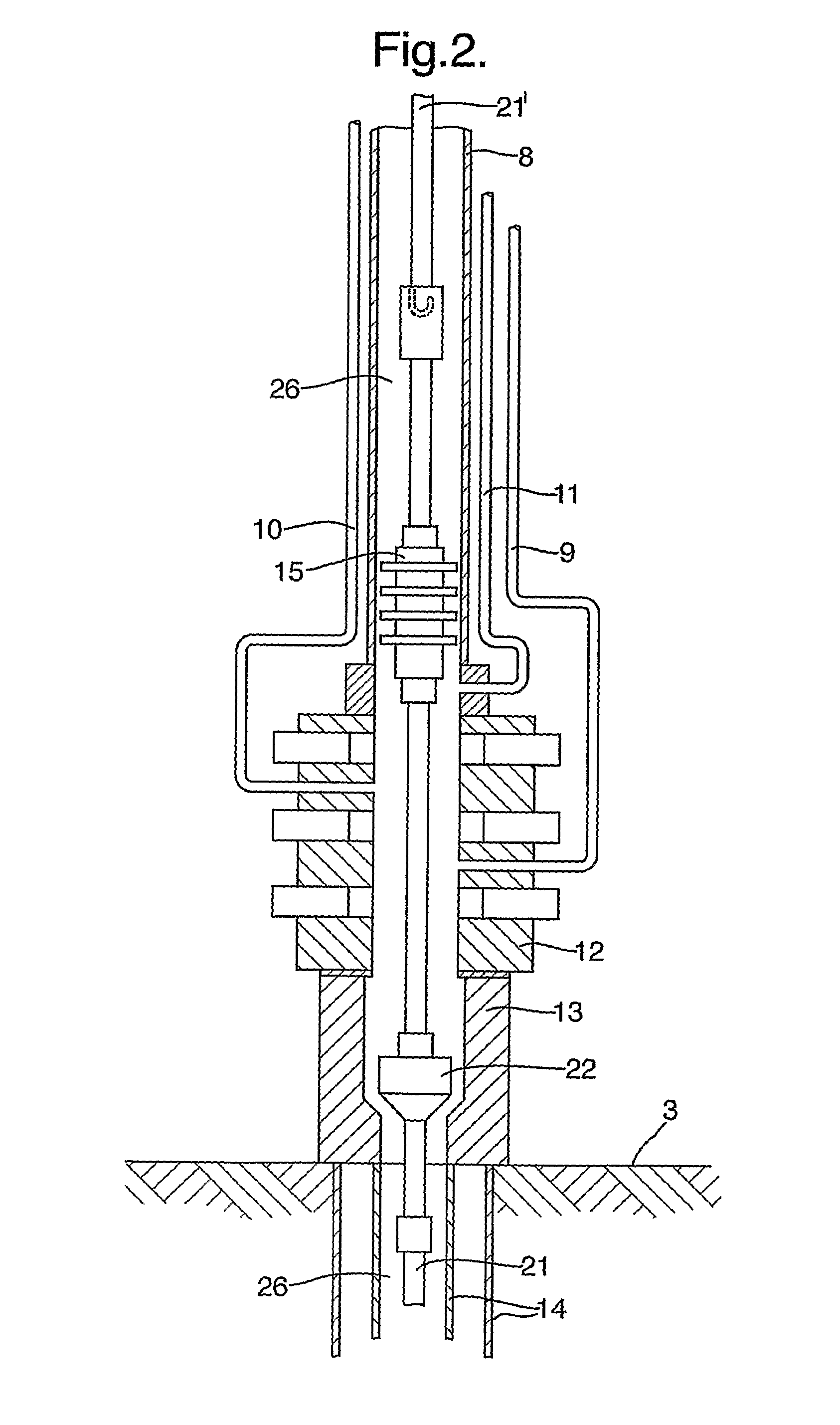Separating device
a separation device and separating tube technology, applied in the direction of sealing/packing, drilling pipes, borehole/well accessories, etc., can solve the problems of reducing the effect of the sealing body and the elastic sealing elements, affecting the sealing effect, and reducing the drawbacks
- Summary
- Abstract
- Description
- Claims
- Application Information
AI Technical Summary
Benefits of technology
Problems solved by technology
Method used
Image
Examples
third embodiment
[0036]According to the embodiment shown in FIG. 3, the drilling vessel may now start the high-pressure pumps and begin to pump water down through the externally located longitudinal pipes (kill 9, choke 10& booster line 11) whilst the upper portion of the drill string 21′ is hoisted up onto the drilling vessel 1 at a desired speed. shown in FIG. 5, the installation device 27 will be hoisted up with the drill string 21′ at a desired speed.
[0037]The sealing element 15 according to the first embodiment shown in FIG. 3 can be disconnected from the drill string 21 and 21′ at the wellhead 13, whilst an assembly of sealing elements forms the seal against the internal pipe wall of the riser 8 and an actuatable mechanism closes the open flow area in the sealing body 15. Another variant is that the separating device 15 according to the third embodiment shown in FIG. 5 is mounted internally in the installation device 27, for example, by means of the externally located sealing elements / gaskets...
fifth embodiment
[0051]the invention is shown in FIGS. 7-10. The principles are the same as in the embodiments above and we will only describe the difference. When the hang-off tool 22 has been hung off in the wellhead 13 and disconnected, the pipe section 21′, where pipe section 21′ means, but is not limited to, a drill pipe, coil tubing or other elements having an internal open cavity, will be within the riser 8 in a condition where the pipe section 21′ has an open end above the wellhead 13 as shown in FIG. 7. In this position, an element / separating device 15 may be placed inside the pipe section 21′, which is of a character and configuration such that it is capable of being displaced internally or of moving inside the pipe section 21′ from the drill floor down to the open end above the wellhead 13 as shown in FIG. 8. This internal movement may be effected by pumping / displacement of the separating device 15 through the pipe section 21′. When the body 15 or the separating device is pumped out of th...
PUM
 Login to View More
Login to View More Abstract
Description
Claims
Application Information
 Login to View More
Login to View More - R&D
- Intellectual Property
- Life Sciences
- Materials
- Tech Scout
- Unparalleled Data Quality
- Higher Quality Content
- 60% Fewer Hallucinations
Browse by: Latest US Patents, China's latest patents, Technical Efficacy Thesaurus, Application Domain, Technology Topic, Popular Technical Reports.
© 2025 PatSnap. All rights reserved.Legal|Privacy policy|Modern Slavery Act Transparency Statement|Sitemap|About US| Contact US: help@patsnap.com



